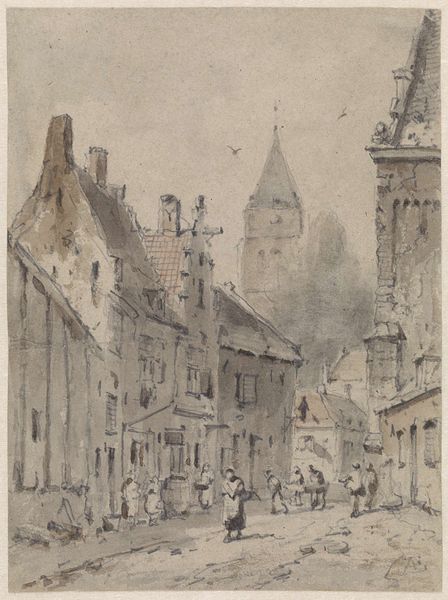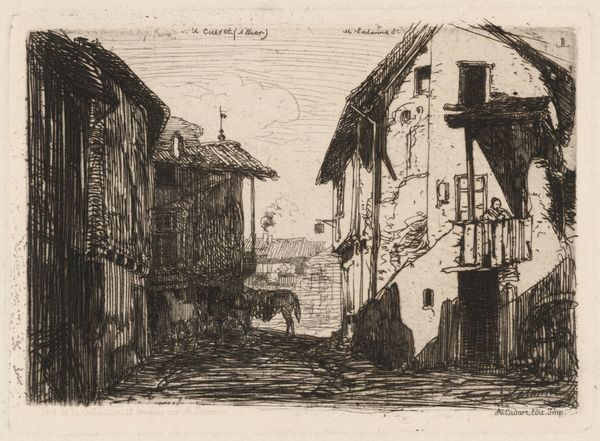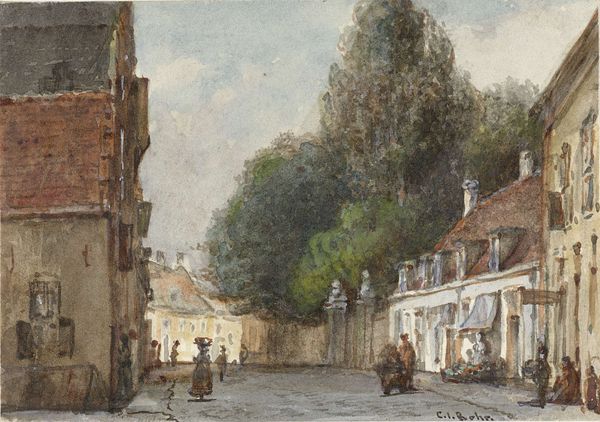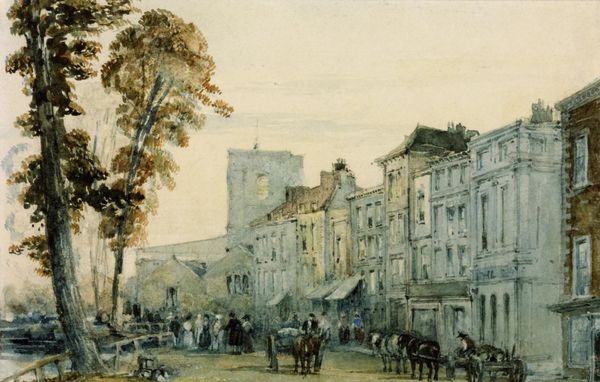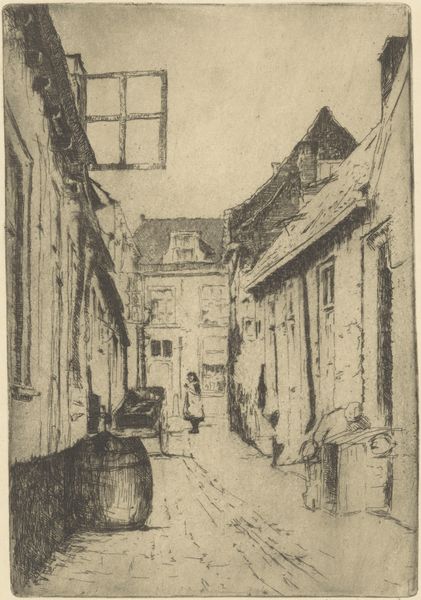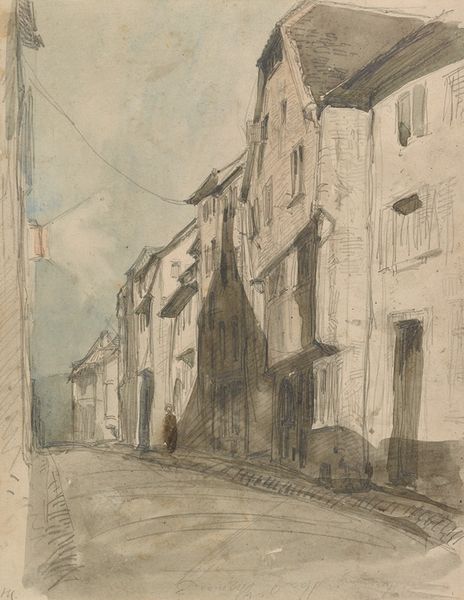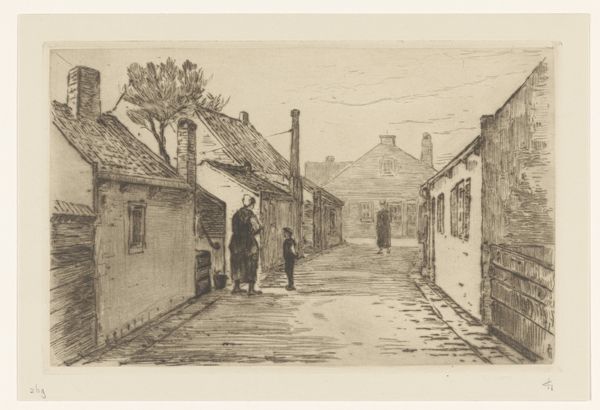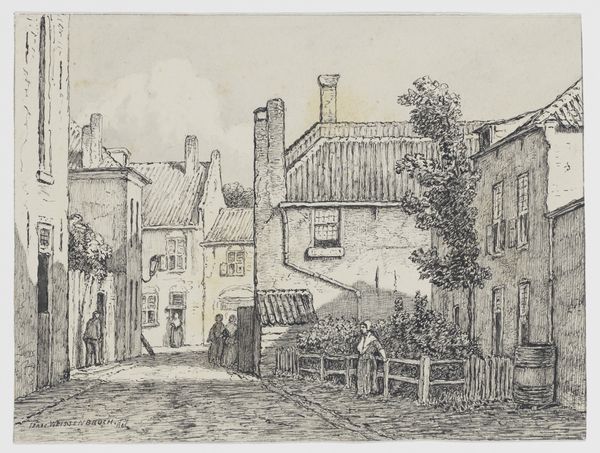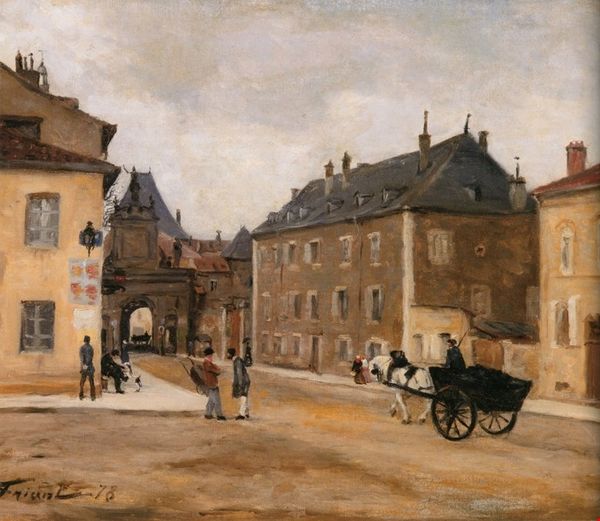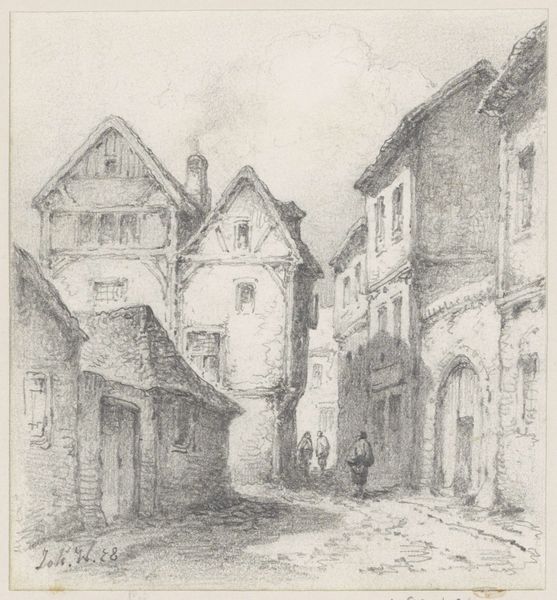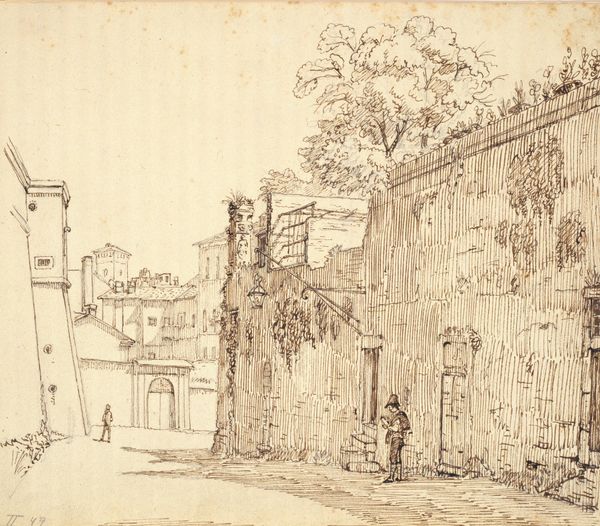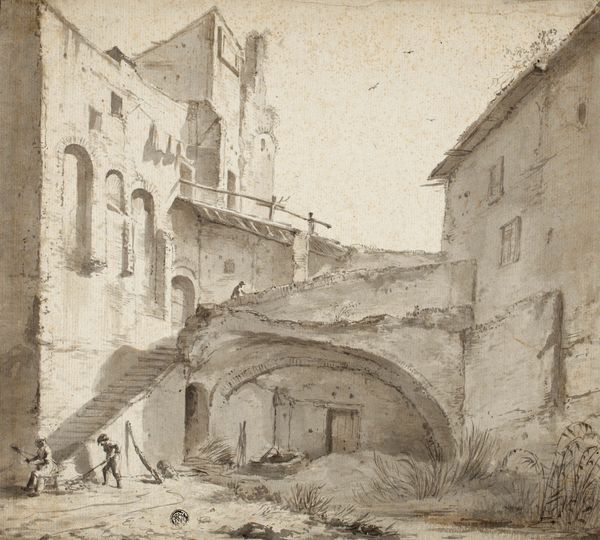
Dimensions: height 190 mm, width 270 mm
Copyright: Rijks Museum: Open Domain
Editor: I’m immediately struck by the quiet stillness of this cityscape; it’s rendered with such subtle tonality. Curator: Indeed. What you’re observing is “Stadspleintje,” or "Small City Square," by Johannes Bosboom, made with watercolor, pencil, and charcoal between 1827 and 1891. It’s currently held at the Rijksmuseum. Editor: The figures, mostly women it seems, are placed quite deliberately, almost like actors on a stage. The nun at the forefront, especially, her dark garb a stark contrast against the muted palette… she holds a certain gravity. Curator: Notice how the geometric framework, that square structure at the center, punctuates the visual field. Bosboom’s expertise is apparent in his utilization of structuralist organization to communicate a sense of architectural solidity, even permanence. Editor: I find it fascinating that Bosboom chose such mundane scenery. City squares were commonplace. Why immortalize this in particular? It's also curious to note the well-like structure and the figures surrounding it: these evoke social communion and religious practice; like visual motifs encoding the social-spiritual importance of simple everyday scenes. Curator: Agreed. Furthermore, Bosboom seems very self-aware, considering how space interacts with light, almost to underscore the ephemeral quality of a romantic landscape piece such as this. One could make a very convincing case, if only the archival evidence supported it… Editor: Whether Bosboom planned this or not, "Stadspleintje" resonates today for me. The woman's religious symbolism gives meaning to what otherwise looks like another modest slice-of-life watercolor. Thank you for shedding light on that, Curator. Curator: My pleasure, Editor. It is in exploring form and image together that we start truly to appreciate art’s potential.
Comments
No comments
Be the first to comment and join the conversation on the ultimate creative platform.
